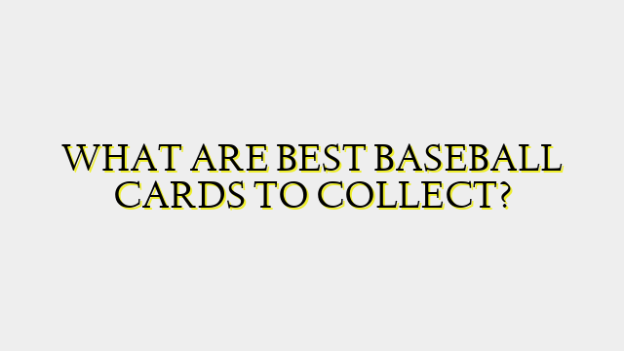When it comes to purchasing baseball cards as investments or collectibles, there are a few main factors that determine which cards have the highest potential to appreciate in value or hold long-term value. While any individual card purchase is somewhat of a gamble based on wider market trends, focusing on cards that exemplify scarcity, star power, and cultural significance provides the best chance of making a worthwhile baseball card acquisition.
One of the most important aspects to consider is the year the card was printed and how many copies were made. Obviously, older cards from the early 20th century when baseball card production was less widespread will be more scarce and hold premium value. Even among modern issues, certain star rookies or rare editions have extraordinarily low print runs that guarantee scarcity over time. For example, the 2009 Bowman Chrome Draft Prospects Superfractor editions of star players like Stephen Strasburg and Bryce Harper only had 5 copies each printed, commanding prices well into the 6 figures even when the players were still developing their careers.
While scarcity it’s self contributes to value, the names on the cards are just as if not more important. Playing ability, award success, career milestones and cultural impact all factor into which players ascend to icon status and carry name recognition with future generations of fans. Household names like Babe Ruth, Jackie Robinson, Mickey Mantle, and Ken Griffey Jr. virtually guarantee any decent condition card will hold steady appreciation. Lesser known All-Star level players spike in interest after retiring as well.
Specifically focusing on star rookies, prospects, and early career cards allows investors to get positions in players before they reach their potential, and ride meteoric price increases if they become superstars. Perhaps the most storied example being a 2009 Bowman Chrome Draft Auto Refractor 1st of Mike Trout, valued under $100 when issued but now changing hands for over $400,000 after he redefined what it meant to be a five-tool superstar outfielder. Other young guns to target include top prospects like Wander Franco or Julio Rodriguez.
Beyond individual players, certain editions, sets and error variants have compelling collectible value. Iconic designs like Topps flagship sets from the 1960s, the pioneering 1952 Topps set, and high-end subsets like Topps Finest and Bowman Platinum command strong, stable demand. Insert cards featuring patches, autographs or rare serial numbers also attract significant premiums versus standard base varieties. Perhaps the most coveted of all are misprints and anomalies caused by production mistakes, which take on an artistic cult following if distinctive enough.
Lastly, special occasion cards commemorating postseason heroics, milestones, All-Star games or award seasons tend to retain relevance and interest over the long-term. ToppsUPDATE cards produced at year’s end to memorialize playoff performances are a smart investment. Similarly, the ultra-premium Topps Tiffany card sets produced annually for the Hall of Fame induction ceremony hold considerable collector cache.
By assessing all these factors and focusing acquisition efforts on scarcest examples in the best possible condition, serious investors can feel fairly confident about certain baseball cards retaining or appreciating in monetary value. Of course, nothing is guaranteed – the trading card market remains speculative and subject to wider economic forces. But by selecting holdings emphasizing star power, cult status, rarity and quality, collectors stand the best odds of developing a baseball card portfolio with long-term upside potential. Smart buyers do their research, avoid impulse buys of unknowns, and collect selectively as an enjoyable hobby that may also prove financially prudent.
When it comes to the best baseball cards to purchase as an investment, prioritizing examples with the lowest print runs like star rookies from the past decade, all-time greats from eras long past, iconic subsets and inserts, or special anniversary/award cards represent a smart target strategy. It involves a bit more work than random box breaks, but focusing on scarcity, on-field success, historical relevance and premium editions provides the strongest thesis for baseball card acquisitions maintaining or improving in value over extended periods of time.


